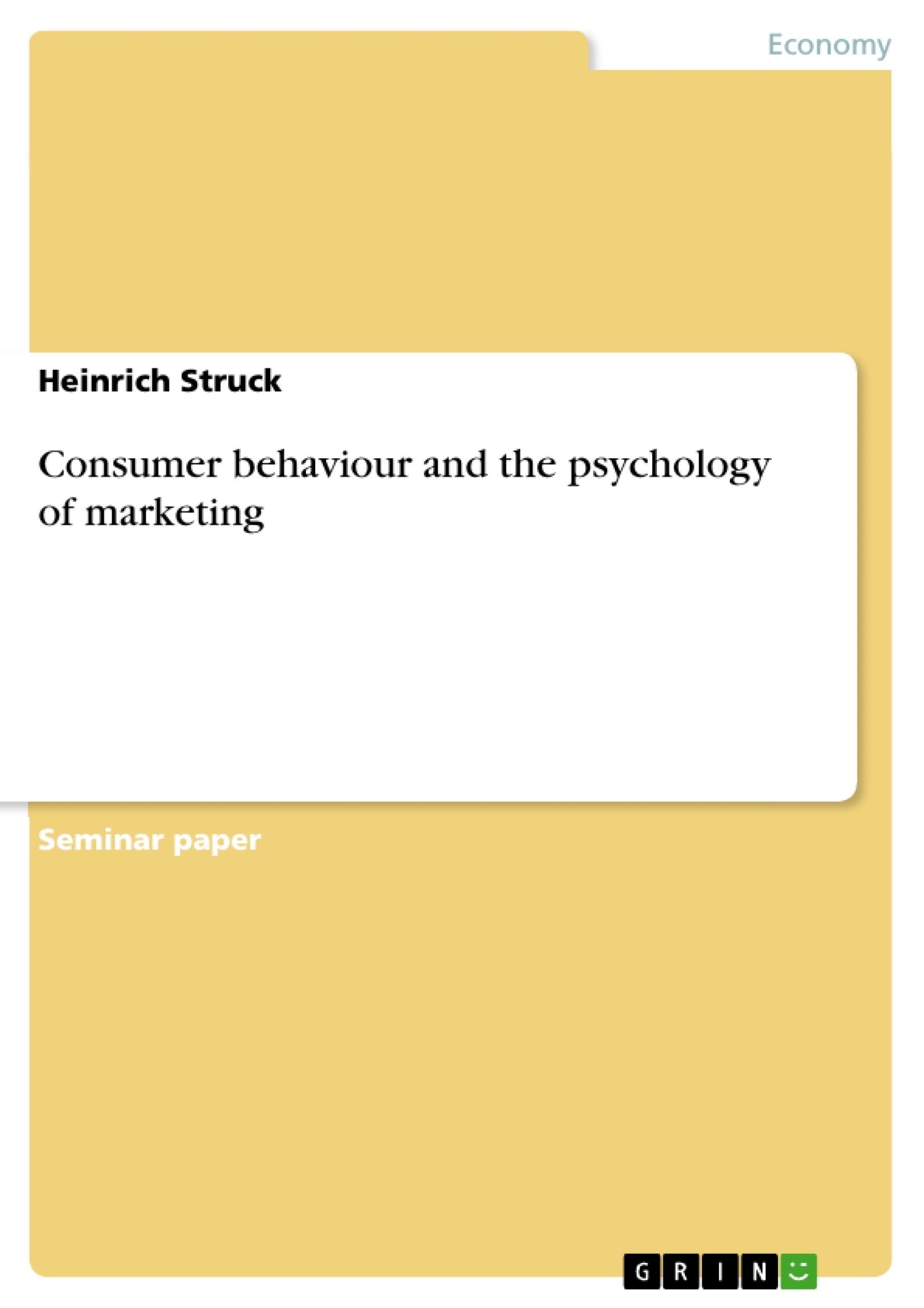The study of consumers helps firms and organizations improve their marketing strategies by understanding issues such as how
°The psychology of how consumers think, feel, reason an select
between different alternatives
°The psychology of how the consumer is influenced by his envi-
ronment like family, culture, media
°The behaviour of consumers while shopping or making other marketing
decisions
°Limitations in consumer knowledge or information processing abilities
influence decisions and marketing outcome
°How consumer motivation and decision strategies differ between products
that differ in their level of importance or interest that they entail for the
consumer
°How marketers can adapt and improve their marketing campaigns and
marketing strategies to more effectively reach the consumer
One of often needed definition of consumer behaviour is ”The study of individuals, groups, or organisations and the processes they use to select, secure, use, and dispose of products, services, or ideas to satisfy needs and the impacts that these processes have on the consumer an society “. There are elements of psychology,
sociology, sociopsychology and economics influencing the buyer´s decision.
Consumer behaviour is the study of how people buy, what they buy, when and why
they buy. Consumer behaviour involves services and ideas as well as tangible products. The main applications are marketing strategy, public policy, social
marketing and as a final benefit, studying consumer behaviour should make us better consumers.
Inhaltsverzeichnis (Table of Contents)
- Introduction
- Consumer research methods
- Problem recognition
- Demographics
- Segmentation
- Decision making
- Influences
Zielsetzung und Themenschwerpunkte (Objectives and Key Themes)
This text explores the field of consumer behavior and its intricate relationship with marketing psychology. It aims to provide a comprehensive understanding of how consumers make decisions, what factors influence their choices, and how marketers can effectively reach and engage them. Key themes discussed in the text include:- The psychological processes underlying consumer decision-making
- The influence of internal and external factors on consumer behavior
- The importance of market research and segmentation in understanding consumer needs
- The various stages of the consumer decision-making process
- The significance of post-purchase evaluation in shaping future buying patterns
Zusammenfassung der Kapitel (Chapter Summaries)
Introduction
The introduction delves into the field of consumer behavior, highlighting its importance in understanding consumer psychology and its implications for marketing strategies. It emphasizes the significance of understanding how consumers think, feel, and make decisions, as well as the influence of their environment. The chapter also discusses how consumer knowledge and motivation impact their decisions and marketing outcomes.Consumer research methods
This chapter explores the importance of market research in understanding consumer needs and desires. It emphasizes the role of research in reducing risks associated with new products, but also acknowledges its limitations. The chapter introduces the concept of perception as a crucial psychological process involved in information search and problem recognition.Problem recognition
This chapter focuses on the concept of problem recognition, defined as the gap between a consumer's desired state and their actual state. It discusses various sources of problem recognition, including new products, marketer-induced needs, and dissatisfaction with existing products. The chapter also explores the link between problem recognition and motivation.Demographics
This chapter explores the role of demographics in consumer behavior, focusing on internal influences within a population's structure. It discusses the impact of demographic shifts, such as age distribution, on economic growth and societal challenges.Segmentation
This chapter introduces the concept of segmentation, where consumers with distinct needs are identified and categorized. It presents three approaches to marketing: undifferentiated, concentrated, and differentiated. The chapter further discusses the use of demographic variables in differentiating consumer groups.Decision making
This chapter outlines the various steps involved in consumer decision-making, including problem recognition, information search, evaluation of alternatives, and purchase. It emphasizes the importance of integration in the purchase decision process and discusses the role of credit, sales promotions, and post-purchase evaluation in shaping future buying patterns.Influences
This chapter examines the influence of both internal and external factors on consumer behavior. Internal influences include demographics, psychographics, personality, motivation, knowledge, beliefs, and feelings. External influences include culture, ethnicity, family, social class, and marketing mix factors.Schlüsselwörter (Keywords)
Consumer behavior, marketing psychology, decision-making, perception, motivation, problem recognition, information search, demographics, segmentation, internal influences, external influences, market research, post-purchase evaluation.- Quote paper
- Heinrich Struck (Author), 2008, Consumer behaviour and the psychology of marketing, Munich, GRIN Verlag, https://www.grin.com/document/118194




